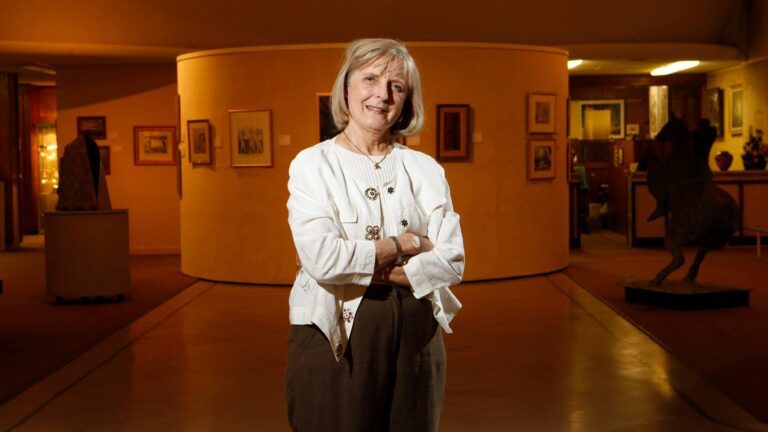For decades, Jane Burns was active in a wide range of cultural spheres in Elkhart and South Bend, but her most lasting contribution was her work in managing the Midwest Museum of American Art, from its inception until her retirement in 2015. She died on December 7 of ovarian cancer. It was 81.
Born Billye Jane French on Nov. 1, 1940, in Yeager, Okla., she married Dr. Dick Burns in 1960. Dick's work with the U.S. Public Health Service and the U.S. Air Force required an itinerant lifestyle for his early years marriage, but after living in several different cities – including Tokyo – the couple moved to Elkhart in 1967 and stayed for the rest of their lives.
More: See the artists' quirky and calm views of local life juried in Elkhart
In 1978, Jane and Dick created the Midwest Museum of American Art, serving as its founders. Brian Byrne, Jane's successor as museum director, says the global profile of American art has blossomed since then, but at the time, the art world was still so dominated by European influence that it was bold enough to dedicate a museum to it. only to American artists.
“There weren't many courses taught about American art, just something. When I got here in 1981, I had to relearn art history, and there was little evidence that American art was valued scientifically.” says Byrne. “The growth of this museum has paralleled the growth of scholarship in the field of American art and the public interest in American art. The history of this museum has been traced along with the rise of respect for American art.”
Although Dick remained involved, Jane took the helm for most decisions regarding the museum's acquisitions. He created a collection that reflected the vast panorama of styles and subgenres of American art, ranging from iconic mainstream figures (Grant Wood, Norman Rockwell) to modernists and avant-gardists such as Roger Brown and Arthur Bowen Davies. Jane also participated in juried competitions, which helped raise the profile of the museum beyond the immediate area. All the while, the accumulation of stockpiles in the permanent collection began to pay dividends. In 1981, there were 224 pieces in the collection. the number is now over 7,500. Jane realized she could get Byrne to identify and curate exhibits through their own exhibitions.
“In 2006, Jane told me that traveling exhibits were getting too expensive and we just couldn't afford all these canned shows anymore,” Byrne says.
Alongside traveling and home exhibitions, Jane and Dick cultivated relationships with living artists, mainly sculptors Tuck Langland. Dick's commitment to a high-dollar acquisition of one of Langland's seminal early works, “Venus Natarani,” was a critical step, and the relationship only deepened from there. In 2019, the museum presented a survey of Langland's career in a show titled, “The Tuck Langland Collection: A Biography in Sculpture.” Byrn is currently working on curating a follow-up exhibition, to be called “Tuck Langland: Beginnings”, chronicling the sculptor's early life up to the year 1972.
More: The Midwest Museum of American Art tells the story of Tuck Langland through sculpture
Langland's wife, Janice, regularly welcomed Jane as a visitor and informal adviser in his early days Firefighting arts in South Bend, while Janice was the organization's president.
“Jane was so enthusiastic about the ways she supported Fire Arts,” says Janice. “Of course, every time we had a fundraiser, she sent money. That was great, but what's even better is that every time Fire Arts had something going on, she brought her PhDs. She asked us to teach the professors about the procedures. If we hosted lectures, she would she had her teachers there.”
The Langlands met Jane in another dimension after their work as colleagues ended. For the past two years, they have been next door neighbors in their retirement apartment.
“With Jane, there were a lot of dinners, usually with her pork tenderloin,” Tuck says. “She was just as good at throwing dinner parties as she was at anything else she did.”
He even curated apartment life.
“He would throw birthday parties for some of the older ladies,” says Janice.
“He would get up early in the morning and go downstairs and get everybody's papers,” Tuck says, “bring them in and deliver them to people's doorsteps.”

